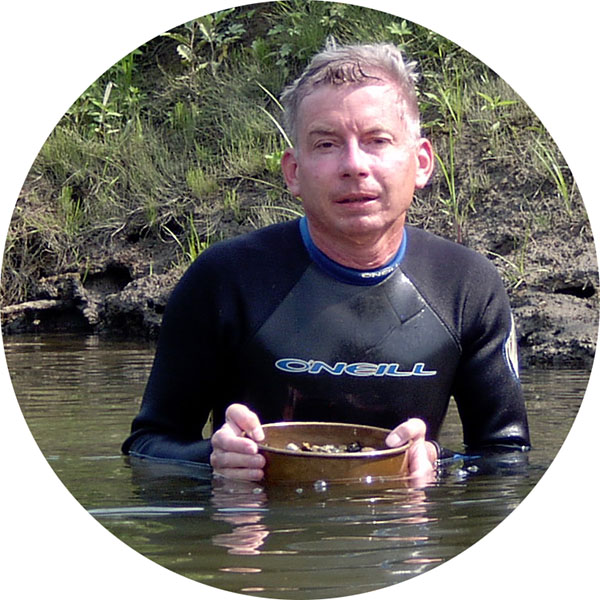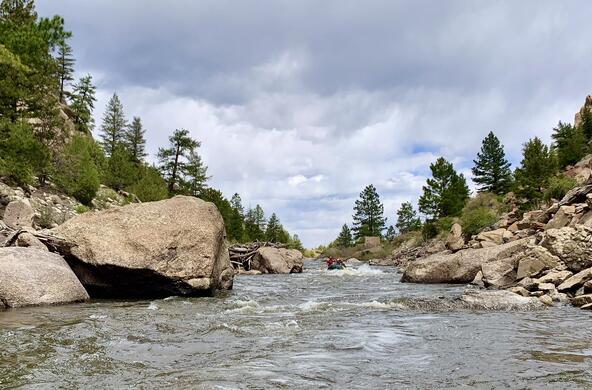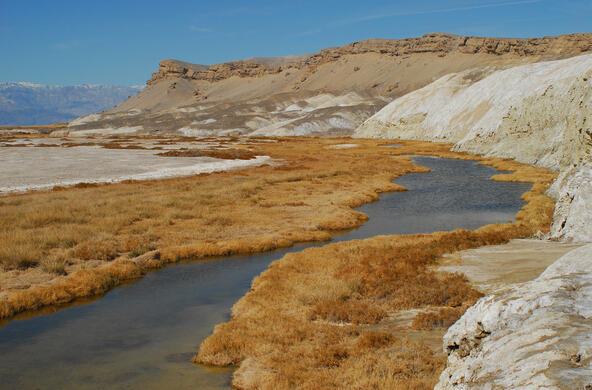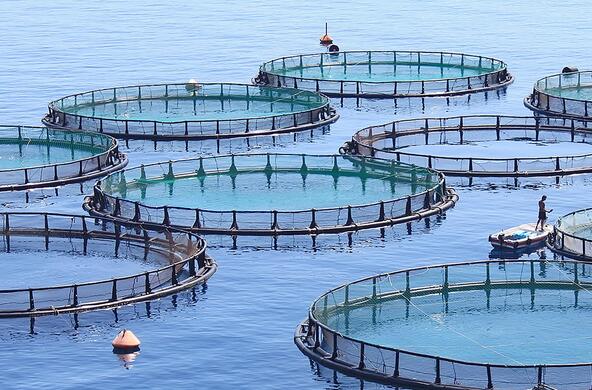Whoever named the "temperate zone" must have had a sense of humor. I'm writing this during a week of humid, 90-degree days, and just a few months ago it was 13 below, a stiff north wind providing the icing on that frozen cake. Since then, we've had rain, snow, sleet, warm spells, cold snaps and thunderstorms.
Wouldn't it be nice to live someplace without the broiling heat, bone-chilling cold, and erratic swings that have you reaching for a short-sleeved shirt one minute and a parka the next – in a word, where the climate was a little more ... temperate?
There is a place like that, right here in Dutchess County. A place where the temperature never gets much above 80 or goes below freezing, and changes only gradually, in the most genteel fashion. And if you can't think of any place like that, it's because you're a habitual air-breather (go ahead, admit it), and are overlooking underwater habitats.
As the upper graph shows, water temperatures can be strikingly different from air temperatures right next door. Notice the stream doesn't get nearly as hot in the summer or as cold in the winter as the nearby air. How can this be?
First, it takes a lot of heating or cooling to change the temperature of water. Very few known substances resist temperature change as stubbornly as liquid water does. As a result, air temperatures may change by 40 degrees or more on a clear, sunny day, while stream temperatures scarcely change 10 degrees between the pre-dawn chill and the mid-afternoon heat (see the lower graph).

Second, liquid water is very reluctant to change into a gas (water vapor) or a solid (ice). Huge amounts of energy that otherwise would make water very hot in the summer or very cold in the winter are instead consumed when water evaporates or freezes. When 1 pound of water evaporates on a summer day, it consumes the energy that would otherwise heat 1,000 pounds of water by 1 degree. Likewise, when 1 pound of water freezes on a winter night, it prevents nearly 150 pounds of water from chilling by 1 degree. So evaporation and freezing protect underwater habitats from the extreme hot and cold that those of us who live above the waterline are all too familiar with.
Third, deep ground water in our area is 50-55 degrees year-round. Habitats like springs and small streams that are fed by ground water are kept near this temperature both summer and winter. This moderating effect can last for many miles downstream because it takes so much energy to change the temperature of water (as explained above).
(The early settlers understood this, and built "spring houses" over springs to keep things cool during the summer in the days before Frigidaires. You can still see the ruins of these spring houses all over the Hudson Valley.)
So life in the watery part of the temperate zone sounds pretty nice, without those uncomfortable extreme temperatures that we air-breathers suffer through.
Not quite.
Many aquatic animals are sensitive even to what we'd call moderate temperatures, probably because they evolved in habitats where temperatures were so stable. The trout that live in local streams will die if the water gets much above 80 for even short periods of time.
This means that cool-water refuges, such as springs, seeps and deep shade, can mean the difference between life and death for trout during hot summers. Trout almost certainly will be unable to survive the hotter summers that are coming to the Hudson Valley as the climate changes in the next few decades. One model suggests trout will disappear from all streams in the eastern United States by the year 2100, although protecting cool-water refuges can keep them around for a little longer. Species less conspicuous than trout will disappear from local waters as well.
So we all suffer together, air-breathers sweltering in the upper 90s in the air and trout sweltering in the low 80s in the water, and summers will get harder for all of us as the climate warms. Temperate zone, my Aunt Fanny.








